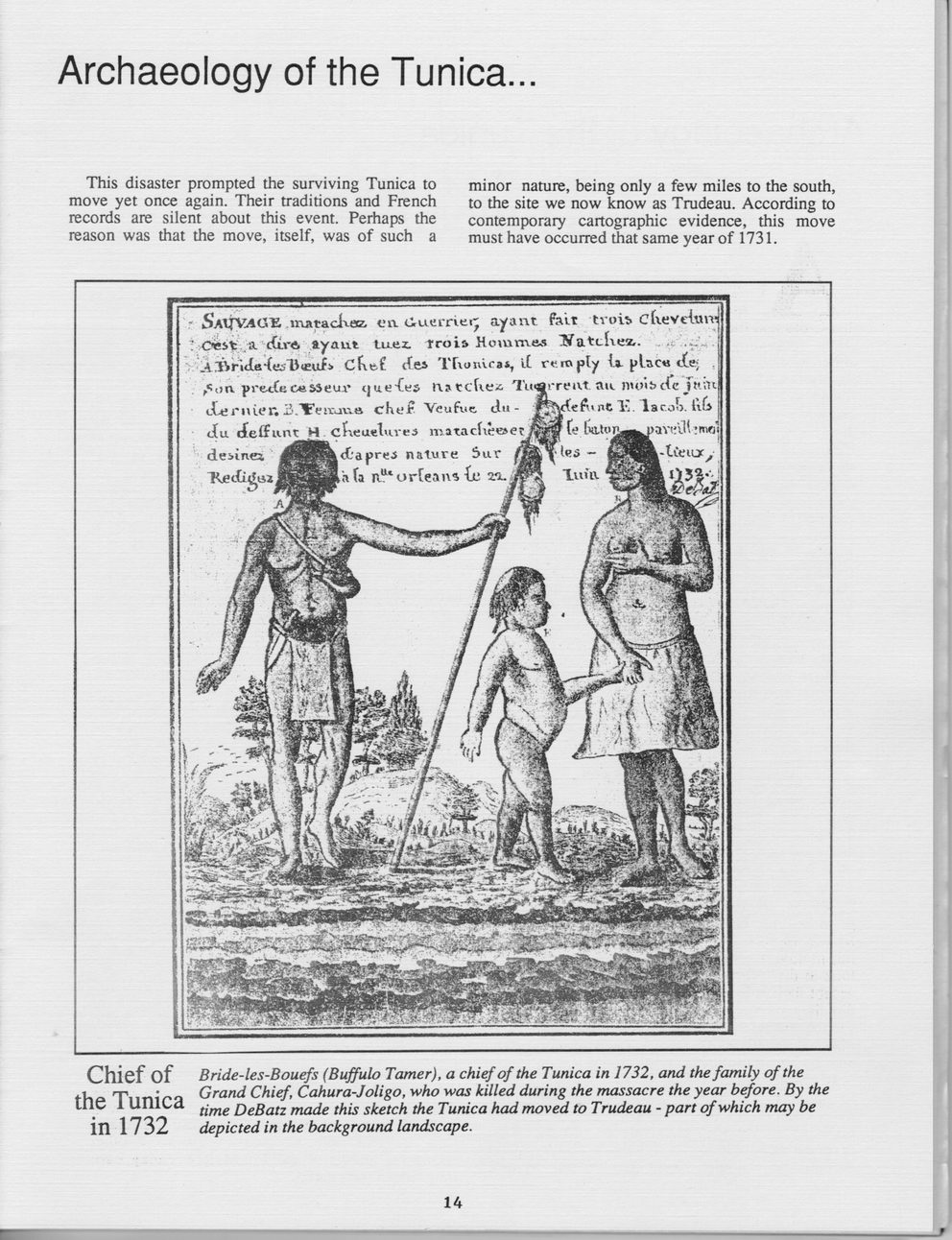This text was obtained via automated optical character recognition.
It has not been edited and may therefore contain several errors.
Archaeology of the Tunica.
This disaster prompted the surviving Tunica to move yet once again. Their traditions and French records are silent about this event. Perhaps the reason was that the move, itself, was of such a
minor nature, being only a few miles to the south, to the site we now know as Trudeau. According to contemporary cartographic evidence, this move must have occurred that same year of 1731.
5aITK4C(E matacixecz. ca (iuemei' ay ant fcut tv nib ctxeveiun-Oest a. (ftvA ayaut tu.ez. frois Hommes batches,.
AiW'ida-Ctisbusufi Cftef tfea ITiomca*, iX rempty la. pUc« tCe-; ,«:,m pretfece&SeuA* queues nstcfxe^ Tu<arreut.ait nu»ibcfc Jtun t£t!rnier. chei* "Veufvic tin - < nfc T. lacoij. lil>
c{u rfeif unt H cPieueUtves matac(\e«»er mgS fe Lviton«^.paYi;iK desinea TVecGjfui
Chief of Bride-les-Bouefs (Buffulo Tamer), a chief of the Tunica in 1732, and the family of the .1 Tnnira Grand Chief, Cahura-Joligo, who was killed during the massacre the year before. By the Inc 1 unicd ■ DeBatz made this sketch the Tunica had moved to Trudeau - part of which may be
in 1732 depicted in the background landscape.
14

Native Americans The-Tunica-Biloxi-Tribe-its-Culture-and-People-(21)